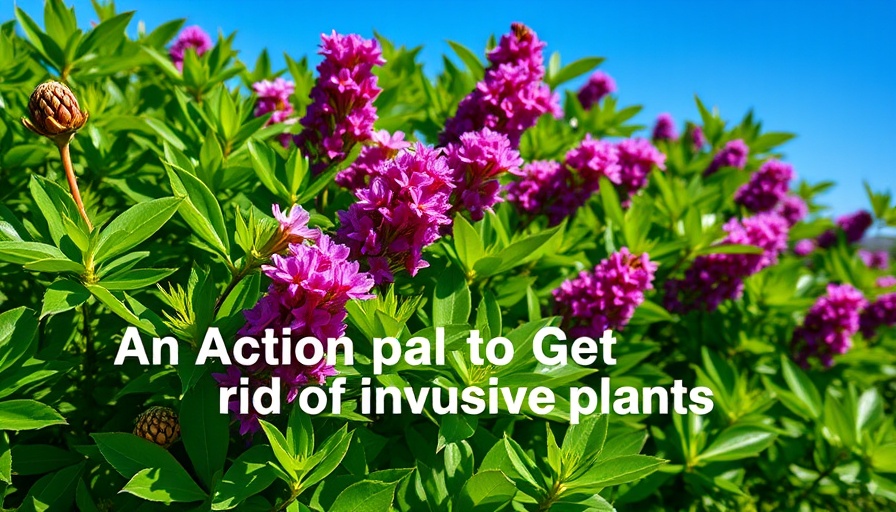
Understanding Invasive Plants: The A-Z
As homeowners increasingly seek to cultivate healthy gardens, the importance of understanding invasive plants cannot be overstated. These are not just plants that grow rapidly; they disrupt ecosystems, outcompete native species, and can take over landscapes, making them a significant challenge in sustainable landscaping. Some common offenders, such as Japanese knotweed or kudzu, can be particularly persistent, giving gardeners a substantial headache. Tackling them effectively represents both a challenge and an opportunity for creating a healthier home garden.
Four Steps to Effectively Remove Invasive Plants
1. Identification: Before you can effectively eliminate invasive species, you must identify them. Take a walk around your garden and note any plants that seem out of place or overly aggressive. Resources like local extension services or plant identification apps can aid in accurate identification.
2. Site Assessment: Understanding your garden's layout and how invasive plants spread is critical. Are they near a water source? Are they taking over your raised beds or perennial gardens? Evaluating the extent of invasion will inform your removal approach.
3. Removal Methods: Active removal can require several techniques. Pulling plants by hand is effective for small infestations, while herbicides may be necessary for larger problems. Be sure to follow safety guidelines for chemical use, especially in home environments. A promising organic method is the application of boiling water or vinegar to suffocate weeds without harming your soil's integrity.
4. Prevention: The best strategy is thus to prevent re-infestation by incorporating strategies such as mulching, planting native species, or engaging in vigilant monitoring. Educating yourself about ecological balance and sustainable gardening practices—like those found in Fine Gardening—could also significantly enhance your garden's resilience.
Connecting with Your Garden: A Journey
Removing invasive plants doesn't just protect your garden; it connects you deeply with the soil and ecosystem. Each plant that we cultivate or remove tells a story of our commitment to sustainability and resilience. Those moments when hands are dirty in the earth are grounding experiences connecting us to nature and community.
Future of Gardening: A Call to Action
As we look forward, the role of home gardening in urban and suburban environments becomes vital. With the rise of climate change and ecological awareness, practicing organic gardening can secure a healthier environment for future generations. Engaging in battles against invasive flora shapes us into stewards of the earth.
Final Insights: Embrace Your Gardening Journey
Harnessing the power of your garden means acknowledging the presence of invasive species while envisioning the beauty of a thriving ecosystem. Integrating these steps aligns with an ethos of self-sufficiency and stewardship. So, grab those gardening gloves, gather your tools, and embark on this fulfilling journey of creating a sustainable garden sanctuary.
 Add Row
Add Row  Add
Add 




 Add Row
Add Row  Add
Add 

Write A Comment